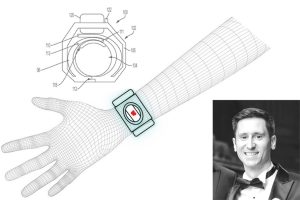
While working for companies in the field of sterility assurance, Nick Desantis ’12, MS ’18, didn’t find many opportunities to contribute to the design concept development of new products. But that changed when he began working for Cordis, a medical device company specializing in cardiovascular devices. They made it clear they were welcoming new ideas, so he sent them a final project presentation he’d completed for a class in the Applied Biomedical Engineering program at Johns Hopkins Engineering for Professionals.
His school assignment? To design and market a new product in the cardiovascular space through a Shark Tank–style pitch video.
Inspired by his background in sterilization procedures, DeSantis pitched a hemostasis pressure device that utilizes reusable parts. At the conclusion of a transradial cardiac catheterization procedure, where a doctor accesses the heart through the wrist’s radial artery, these devices are commonly used to prevent bleeding at the access point and help the tissue heal by applying pressure to the area.
Current versions of the device can only be used once; but DeSantis’s design breaks the device down into two main components: a disposable inner cuff that comes in contact with the patient’s skin and a reusable outer part that applies the pressure and can be sterilized with equipment already commonly found in hospitals.
For hospitals, the design’s reusability would cut down the cost of supplies and help curb medical waste, particularly since the reduced risk of complications from transradial procedures, as opposed to transfemoral, makes them an increasingly preferred method for treating and diagnosing heart conditions. For DeSantis, presenting the design to his employers marked a turning point in his career.
“It was awesome to have my ideas taken seriously and pursued by the R&D and legal teams, even though I was not in an R&D role at the time,” he says of the experience. “The Shark Tank-style at first seemed excessive, but it was more fun and definitely got their attention. I also think being in a Johns Hopkins biomedical engineering program gave me more credibility and helped get my foot in the door.”
Since pitching it, DeSantis has secured a patent on his device through Cordis, and he was able to move into a device design and development role with a new employer, thanks in part to the experience. It’s also encouraged him to try to patent more of his designs.
“It is exciting that the EP program has brought these opportunities to my career,” he says.